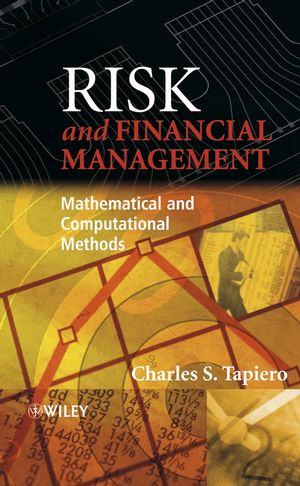Risk and Financial Management: Mathematical and Computational MethodsISBN: 978-0-470-84908-8
Hardcover
360 pages
April 2004
 This is a Print-on-Demand title. It will be printed specifically to fill your order. Please allow an additional 10-15 days delivery time. The book is not returnable.
|
||||||
Financial risk management has become a popular practice amongst
financial institutions to protect against the adverse effects of
uncertainty caused by fluctuations in interest rates, exchange
rates, commodity prices, and equity prices. New financial
instruments and mathematical techniques are continuously developed
and introduced in financial practice. These techniques are being
used by an increasing number of firms, traders and financial risk
managers across various industries. Risk and Financial
Management: Mathematical and Computational Methods confronts
the many issues and controversies, and explains the fundamental
concepts that underpin financial risk management.
- Provides a comprehensive introduction to the core topics of risk and financial management.
- Adopts a pragmatic approach, focused on computational, rather than just theoretical, methods.
- Bridges the gap between theory and practice in financial risk management
- Includes coverage of utility theory, probability, options and derivatives, stochastic volatility and value at risk.
- Suitable for students of risk, mathematical finance, and financial risk management, and finance practitioners.
- Includes extensive reference lists, applications and suggestions for further reading.
Risk and Financial Management: Mathematical and Computational Methods is ideally suited to both students of mathematical finance with little background in economics and finance, and students of financial risk management, as well as finance practitioners requiring a clearer understanding of the mathematical and computational methods they use every day. It combines the required level of rigor, to support the theoretical developments, with a practical flavour through many examples and applications.



